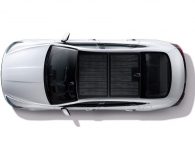

Not content with attempting (with variable success) to go into space, make automated driving the new norm, and drilling giant tunnels underground through for superfast hyperloop trains, Elon Musk wants to expand his business in a new direction: insurance.
Musk plans to use the anonymised data collected by his fleet of Tesla vehicles to offer cut-price insurance to people driving his cars. Doing so, he reckons, would provide Tesla drivers with rates at a 20 per cent discount to other providers. The plan will start in California, but Musk wants to expand it beyond shortly thereafter.
“It always fascinates me when companies go from one sector to another like this – offering insurance is very different to building batteries and cars,” says Chris Yiu of the Tony Blair Institute for Global Change, and a former general manager at Uber.
Yiu draws parallels between Tesla’s break into the insurance industry and challenger banks trying to disrupt the financial sector in Britain and elsewhere. “It quite appeals to me that someone with a tech and UX approach is doing it,” he says. “The jury is out whether that will be a lovely, seamless experience or as burdensome as it currently is.”
But there are some important caveats: for one thing, Musk currently wants to only insure his own vehicles. “When you’re providing specific insurance for a vehicle, you can more tightly control those relative costs and you can see the absolute risk that your buyers or users offer, and therefore you can give a more bespoke product that may be more competitive than a general insurer,” says Matthew Avery of Thatcham Research, which looks at the car insurance market.
And what Tesla is proposing to offer isn’t necessarily new. “Data-driven auto insurance is already offered to American drivers by a number of US auto insurers,” explains Michael Barry of the Insurance Information Institute, an American industry body. “Insurers recognise vehicles can be equipped to provide them with the type of detailed information insurers need to price accurately the cost of an auto insurance policy.”
One insurer, Progressive, has an app- or device-based system called Snapshot that uses telemetry to learn better how someone drives – and therefore how to more accurately calculate their insurance premiums. Snapshot tracks the time of day people drive, the amount they drive, and sudden changes in speed. Some states allow the company to also track whether (and how) people use their phone will driving.
“Rather than guessing the number of miles a policyholder drives, and where and when they’re driving, this information can be gleaned either from the vehicle itself or from an electronic device an auto insurer installs in the vehicle with the driver’s permission,” says Barry. With a Tesla, that information is already baked in by dint of the way the car works.
That could make a big difference, reckons Yiu. “You can overcome a lot of the friction that you would have if you were a classic insurer trying to do something like this across a diverse fleet of vehicles,” he says. “You haven’t got to send anybody any extra technology. You haven’t got to install anything on their smartphone. It should just work. One thing we know from consumer tech is convenience tends to be important.”
That would, in turn, help bring down the price of insuring the vehicles. The way the insurance system works is simple. A car is given a rating from one to 50 based on a number of characteristics, allowing insurers to understand the relative risks of a vehicle (and its owners) and to calculate an insurance premium. One is a low-risk car; 50 is a high-risk one. “A Porsche 911 is a 50, and so is a Tesla Model S,” says Avery.
“There are a few hypotheses why Musk is doing this,” says Yiu. “One is the idea the drivers are risker to ensure, or the technology makes this a riskier proposition.” Teslas operating on autopilot have famously crashed multiple times. “There’s a genuine argument whether that is something traditional insurers are able to price well.”
However, the insurance rating a vehicle is given has nothing to do with the brand, but with a variety of factors. For one thing, Teslas are expensive, which makes them more of a risk to insurers. They’re also incredibly quick, with a fast 0-60mph time. “Because of that, it’s a high relative risk,” explains Avery. “Performance is one of the parameters that’s looked at.” The fact that it’s also an electric vehicle, with a costly battery that would have to be replaced at an expensive, skilled body shop in the event of a crash, also adds to the cost of premiums.
Offering cheaper insurance premiums, based on more granular (if still grouped) data would help improve the cost for drivers, Tesla reckons. “Insurance is based on averages and typical behaviours, and based on trends,” says Avery. “The more data and more knowledge you’ve got about who and what, the more specifically you can tailor the premium.” Yiu believes it could be the future of insurance. “I wouldn’t be surprised if other manufacturers did this,” he says.
Bringing the cost down would be a crucial business move for a company trying to gain a foothold in the car market. “You can view this partly through the lens of bringing the cost of owning a Tesla vehicle down to a place that’s more affordable for a wider number of people,” says Yiu. “For them, ramping this thing to scale as fast as possible is what enables them to achieve the economies on the battery and other parts of the drivetrain.” While Musk wants to slash the price of insurance for drivers, he also has a second, more important worry: keeping his company a going concern.
More great stories from WIRED
🍔 World-class chef rates the best vegan burgers in the UK
😡 TikTok is fuelling India’s deadly hate speech epidemic
🍫 The foods you’ll really need to stockpile for no-deal Brexit
♻️ The truth behind the UK’s biggest recycling myths
🤷🏼 How is the internet still obsessed with Myers-Briggs?
read more at https://www.wired.co.uk/ by Chris Stokel-Walker
Tech









